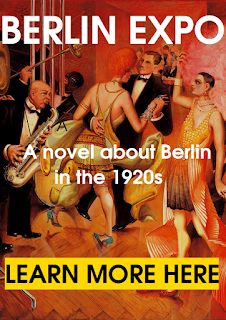 |
| Photo: Getty Images |
The German
expressionist painter Emil Nolde, considered one of the greatest
artists of his time, was a pride of German art lovers. A controversy
over the virulence of his anti-Semitism casts a shadow over the
artist, an article from the newspaper Le Temps, from Switzerland.
Angela Merkel did
not wait for the controversy. At the beginning of April, the
Chancellor made it known that she did not want in her office two
paintings of Emil Nolde which decorated the place. Nor will it
replace them with two paintings by Karl Schmidt-Rottluff instead of
the Prussian Cultural Property Foundation, which manages Berlin's
museums and lends works from its funds to the Bundestag or the
Chancellery.
Angela Merkel has
always loved the work of Nolde. But an exhibition at the Hamburger
Bahnhof highlighting the virulent anti-Semitism of this expressionist
painter has made the company of his paintings unbearable for the
Chancellor. Even if Brecher ("breaking") and Flower
garden are not strictly speaking political works.
As for the
expressionist Karl Schmidt-Rottluff, his biography is not without
stains, as shown by a second exhibition devoted to German
Expressionists during National Socialism at the Brücke Museum in
Berlin.
The controversy
aroused by both Nolde's anti-Semitism, whose virulence has long been
downplayed, and the Chancellor's decision to part from his paintings
speaks a lot about the shadow that Nazism continues to shed on German
contemporary art.
At the death of the
painter, in 1956, the foundation of Seebüll maintains the image of
an artist persecuted by Nazism, forbidden to work, deprived of paper
and brushes and forced to brush a few watercolors of flowers in
hiding, excluded from the art market and stripped of his livelihood.
That Nolde admired Hitler, that he entered the NSDAP Nazi Party in
1934, that he hoped to see his popularity take off under the Third
Reich were well known. But not the extent of his anti-Semitism.
The arrival at the
head of the Seebüll Foundation of a new director, Christian Ring, in
2013 will change things. It opens to historians the painter's
archives, and the 25,000 to 30,000 documents they contain.
"Nolde saw
himself as the most important pioneer of the anti-Jewish struggle in
the art world," says Bernhard Fulda. He liked to present himself
as a victim of Jewish artists before 1933 and as a victim of the
Nazis after 1945. Antisemitism played a central role in him. To the
point of wanting to propose solutions to the "Jewish problem"
that he wanted to submit to Hitler, to free Germany from its Jews. Or
to denounce to Goebbels his colleague Max Pechstein, supposedly
Jewish because of his name. When Pechstein, anxious for his safety,
asked him for explanations, Nolde simply replied that his existential
questions did not interest him.
"Merkel’s
decision that no painting of a painter who supported the National
Socialist ideology can decorate the office of the head of the German
government is in my opinion a good thing," said the Deputy
Speaker of the Bundestag, Thomas Oppermann (SPD). But Thole
Rotermund, Treasurer of the German Federation of Art Galleries, sees
it as a form of hypocrisy, noting that "Mrs Merkel continues to
sit at the forefront" at the Bayreuth Festival devoted every
year to the music of the very antisemite Richard Wagner.
"Emil Nolde - A
German legend. The artist and the Nazi regime ", Hamburger
Bahnhof, Berlin. Until September 15th.
The post above reproduces parts of an article from the Swiss

No comments:
Post a Comment